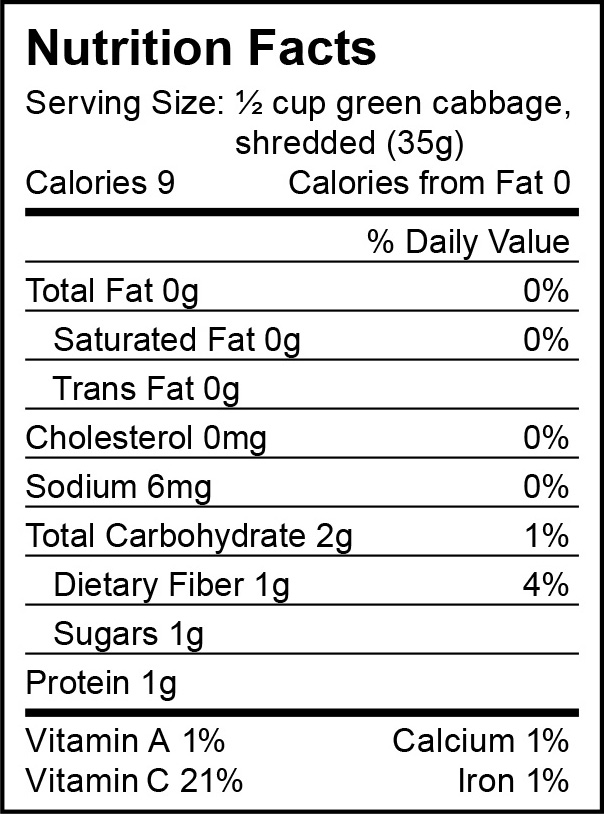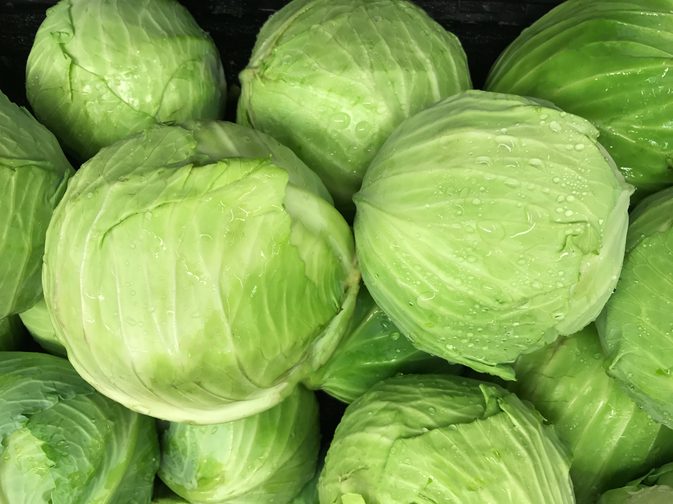We can’t get into a discussion of winter foods without bringing cabbage to the table. Literally. One of the best ways to add some green to your diet during the colder months is through good ole’ cabbage. The tales of cabbage go far back in history – cabbage is dated and recorded throughout Mesopotamia, the ancient Egyptians, and earlier Greeks – even the Ptolemaic Dynasty. Surely you’ve heard stories passed down from your ancestors talking about when food sources were scarce during hard times, and how cabbage was often prepared in meals, even as a substitute. This vegetable is no doubt one of the most common vegetables spoken of in history even to this day. Interestingly enough, cabbage graced history as common food for both the rich
Cabbage
and the poor, although it seems to have a more prominent reputation in the diets of the poor. Cabbage resides as the first cultivated vegetable classified as Brassica.
Jacques Cartier brought cabbage to America from Europe between 1541-1542. The use of cabbage went far beyond that of food consumption back in the day. With so much transportation of goods and trade by ships, traveling doctors formed sauerkraut to help treat the wounds of many men in transit. It also prevented further infection and was hoped to keep the wounds at bay until further medical assistance was available on land.
To give you a better idea of the nutritional value of cabbage, we should note that in a single serving, one gets almost half of their daily Vitamin C intake, iron, Vitamin B6, fiber, and manganese. Since one serving equates to around 35 calories – it’s easy to understand why cabbage is often incorporated into many diet plans. It is said that purple and red cabbages contain twice the nutritional intake of Vitamin C than other types of cabbage. The different types and varieties are green cabbage, savoy cabbage, Napa cabbage, Bok Choy, and even Brussels Sprouts!
In today’s world, the largest producer of cabbage resides with China. India and Russia are right behind China, as they are considered the largest consumers of the vegetable. Cabbage thrives in cold weather – it can even handle frost, making it an ideal winter vegetable.
Next time you pick out a head of cabbage, be sure to choose a head that is firm and heavy. The leaves on the cabbage should be crisp and fresh – not withered and flimsy. The best times of the year to look for great selections of cabbage are between November and April.
Once you’ve selected and purchased your precisely chosen head of cabbage, help preserve it by keeping it in a plastic bag in the refrigerator. Did you know the refrigerator even helps the cabbage retain their Vitamin C?! Yep, it sure does.
Cabbage doesn’t seem to easily disappoint – it can last up to six weeks once in the refrigerator. Of course, this isn’t always the case, but with proper care, it can be. It’s not hard to see why cabbage has remained a constant food source throughout history and remains a staple today.


Western Veg-Produce, Inc.
PO Box 82217
Bakersfield, CA 93380
Office: 1-800-WVegPro (983-4776)
Fax: 1-661-637-2365
Sales: sales@wvegpro.com
Accounting: accounting@wvegpro.com


